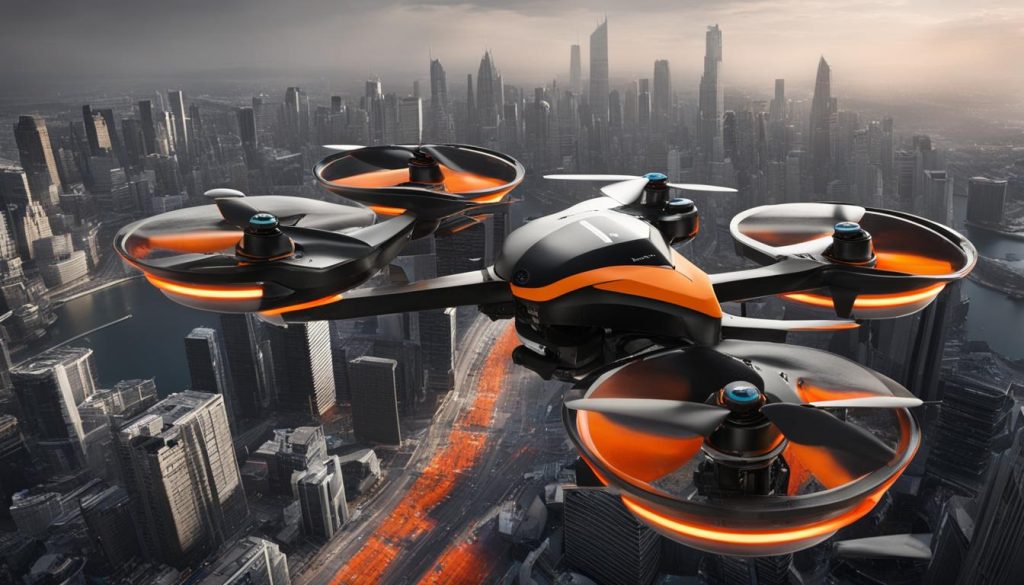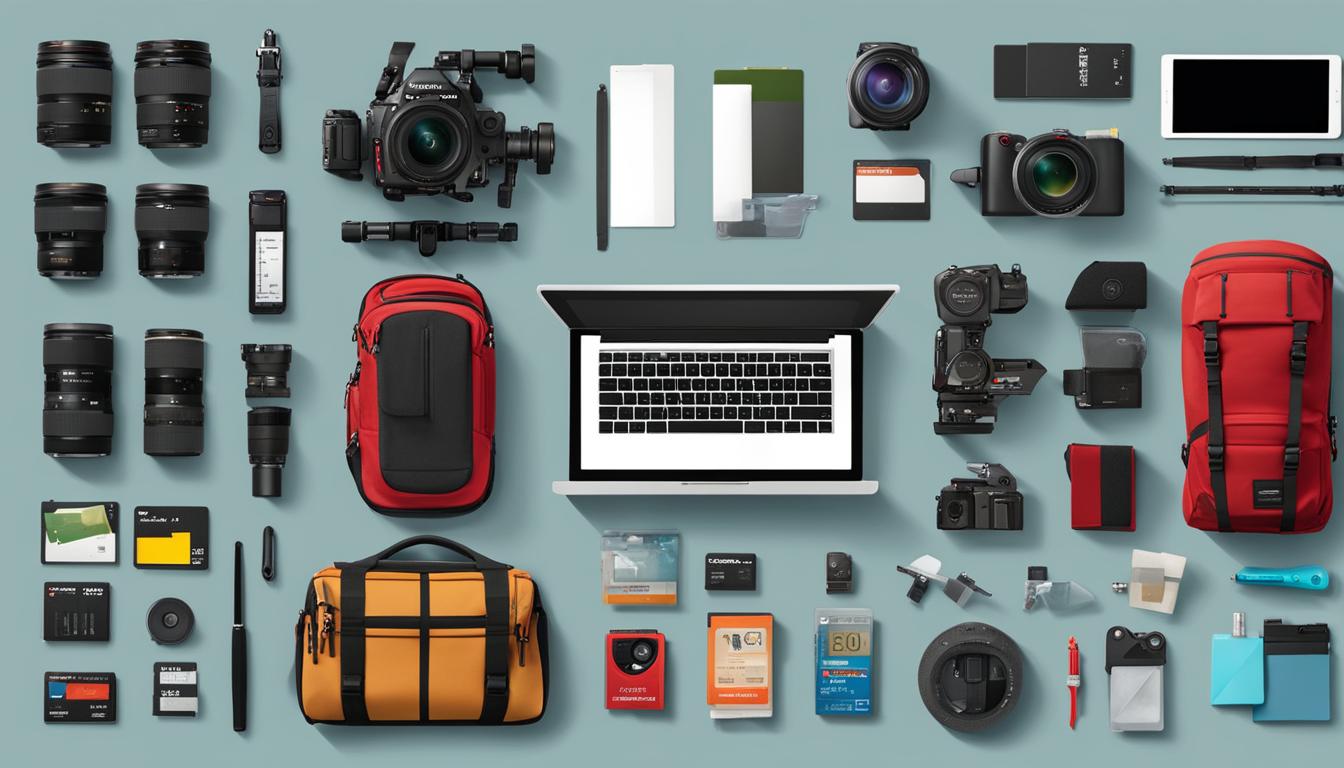Are you a professional aerial photographer looking to capture breathtaking views on your next flight? Look no further than our ultimate aerial photography checklist. With this checklist, you’ll have all the essential aspects covered, ensuring that you capture stunning photographs every time you fly.
Key Takeaways:
- The aerial photography checklist is essential for professional photographers to capture high-quality images.
- Choosing the right drone, pre-flight preparation, camera settings, flying techniques, and post-processing are the critical steps for capturing stunning aerial photographs.
- Following this checklist enhances your chances of creating good quality aerial images and aerial sessions.
Choosing the Right Drone
Before embarking on your aerial photography journey, choosing the right drone is crucial. It can be overwhelming to select one with so many options available in the market. Keep in mind that factors such as camera quality, flight time, and stability are important considerations.
When choosing a drone’s camera quality, pay attention to the camera’s sensor size, resolution, and lens quality. A drone with a high-resolution camera can capture images with more details and produce higher quality prints.
Flight time is another critical factor to consider. It would be best to select a drone with longer battery life, enabling you to fly longer and capture more photos or videos.
The drone’s stability while flying is essential, especially if you need to capture high-quality images or footage. A drone with good stability comes with advanced features such as GPS, obstacle avoidance, and intelligent flight modes that help capture more stable footage.
When considering all these factors, be sure to research and compare a wide range of models before making your final decision.
Pre-Flight Preparation
Proper pre-flight preparation is crucial for a successful aerial photography session. Taking essential steps before takeoff ensures your drone is in the best possible condition and that you will capture stunning aerial photographs.
First, always check the weather forecast and avoid flying in strong wind or rain. Make sure to charge the drone batteries fully and any additional batteries you have. It’s also essential to ensure that all firmware updates are complete before taking off.
Before leaving for the location, ensure that all the necessary equipment, such as memory cards, is in your drone bag.
Finally, create a flight plan or strategy that outlines the areas you plan to shoot. Have a backup location in case the primary location is not feasible for photography.
Camera Settings and Composition
One of the most critical aspects of aerial photography is understanding camera settings and composition techniques. Getting these right can take your shots to the next level and produce stunning results.
Camera Settings
It’s essential to choose the right camera settings to capture the perfect shot. Start by setting your camera to the highest resolution and quality possible. Consider using a low ISO to reduce noise and prioritize using a fast shutter speed to avoid blurry images due to drone movement.
Tip: Adjust camera settings to capture images that are slightly underexposed as they are easier to brighten during post-processing.
Composition
Composition is key in aerial photography. Ensure your shots are well balanced, symmetrical, and have a clear focal point that grabs the viewer’s attention. Experiment with different angles, vantage points, and perspectives to add depth and dimension to your shots.
- Consider the Rule of Thirds, where you divide your image into thirds horizontally and vertically, placing your focal point at the intersection of two lines.
- Use leading lines in landscapes to direct the viewer’s eye towards the subject of the image.
- Include foreground, midground, and background elements to create a sense of depth.
Tip: Use the drone’s gimbal to pan and tilt the camera and add more variety to your shots.
By understanding both camera settings and composition techniques, you’ll take your aerial photography to the next level and produce exceptional results every time.
Flying Techniques and Safety Tips
As a professional aerial photographer, mastering flying techniques can be the difference between capturing an extraordinary picture and returning home disappointed. Safety is also a critical factor to consider to ensure a successful drone photography session. Here are some of the best flying techniques and safety tips to help you capture breathtaking aerial photographs.
Flying Techniques
- Practice makes perfect! Spend some time practicing the basic flying techniques with your drone, such as take-off and landing, hovering, and moving in different directions.
- Before every flight, perform a visual inspection of your drone to ensure it’s in good condition and check the battery levels.
- Always fly your drone with a clear line of sight, and avoid flying in crowded areas and near people or animals.
- Keep an eye on your drone’s altitude and be mindful of any obstacles in its flight path.
- Adjust the camera angle while in flight to capture different perspectives and viewpoints.
- Utilize the drone’s GPS features to return your drone home safely in case of low battery or lost connection.
Safety Tips
- Always follow the Federal Aviation Administration (FAA) regulations for drone flight and ensure that you have the necessary permits and licensing.
- Check the weather conditions before flying and avoid flying in adverse weather conditions such as high winds, rain, and snow.
- Ensure that you have a clear understanding of the emergency procedures and have a first aid kit on hand.
- Keep a safe distance from any other aircraft in the area and always respect the privacy of others.
- Invest in a quality drone with safety features such as obstacle avoidance sensors and automatic return-to-home.
By mastering these flying techniques and keeping these safety tips in mind, you can ensure that your aerial photography sessions are safe and successful. Remember to always prioritize safety to protect yourself, your drone, and those around you.

Post-Processing and Photo Editing
Post-processing and photo editing are crucial in making your aerial photographs stand out. Even if you have captured the most breathtaking views, a little editing can take your photos to the next level. During post-processing, consider working on the overall exposure, contrast, and saturation. You can also crop unnecessary parts and add sharpness and noise reduction for cleaner images.
If you’re new to photo editing, don’t worry, as it may seem overwhelming at first. Consider using software like Photoshop and Lightroom, which come equipped with various tools and features to enhance your aerial photographs. Make sure to always work on a backup copy of the original image and save the changes in a separate file to avoid overwriting the original.
When editing, make sure your photos don’t look too over-processed. Aim for a natural-looking image that showcases the beauty of the aerial landscape. Here are a few editing tips to consider when post-processing your aerial images:
- Focus on individual elements of your photo, such as the sky, landscape, or buildings, and adjust the exposure and colors accordingly.
- Use the Dodge and Burn tools to draw attention to specific parts of the photo.
- Consider experimenting with different filters, such as black and white or vintage, to add a unique touch to your images.
With these essential post-processing techniques and editing tips, you’ll be able to elevate the quality of your aerial images and showcase the beauty of the world from above.
Conclusion
By following this comprehensive aerial photography checklist, you now have all the knowledge and guidelines you need to capture breathtaking views like a pro. Remember to choose the right drone, properly prepare for pre-flight, master camera settings and composition techniques, ensure flying techniques and safety tips are followed, and utilize post-processing and editing techniques to enhance the quality of your aerial images.
Always keep in mind the importance of safety and responsible flying practices. With dedication and practice, you can continue to improve your skills and create stunning aerial photographs every time you fly. Happy shooting!






